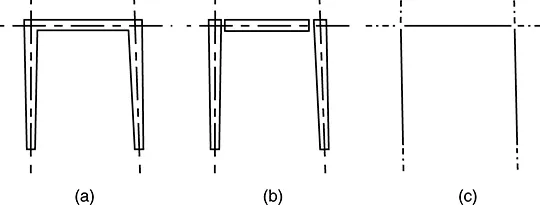
- 520 pages
- English
- ePUB (mobile friendly)
- Available on iOS & Android
Introductory Finite Element Method
About this book
Although there are many books on the finite element method (FEM) on the market, very few present its basic formulation in a simple, unified manner. Furthermore, many of the available texts address either only structure-related problems or only fluid or heat-flow problems, and those that explore both do so at an advanced level.Introductory Finite Element Method examines both structural analysis and flow (heat and fluid) applications in a presentation specifically designed for upper-level undergraduate and beginning graduate students, both within and outside of the engineering disciplines. It includes a chapter on variational calculus, clearly presented to show how the functionals for structural analysis and flow problems are formulated. The authors provide both one- and two-dimensional finite element codes and a wide range of examples and exercises. The exercises include some simpler ones to solve by hand calculation-this allows readers to understand the theory and assimilate the details of the steps in formulating computer implementations of the method.Anyone interested in learning to solve boundary value problems numerically deserves a straightforward and practical introduction to the powerful FEM. Its clear, simplified presentation and attention to both flow and structural problems make Introductory Finite Element Method the ideal gateway to using the FEM in a variety of applications.
Frequently asked questions
- Essential is ideal for learners and professionals who enjoy exploring a wide range of subjects. Access the Essential Library with 800,000+ trusted titles and best-sellers across business, personal growth, and the humanities. Includes unlimited reading time and Standard Read Aloud voice.
- Complete: Perfect for advanced learners and researchers needing full, unrestricted access. Unlock 1.4M+ books across hundreds of subjects, including academic and specialized titles. The Complete Plan also includes advanced features like Premium Read Aloud and Research Assistant.
Please note we cannot support devices running on iOS 13 and Android 7 or earlier. Learn more about using the app.
Information
1
Introduction
Basic Concept
- Time created beings, sky, earth,
- Time burns the sun and time will bring
- What is to come. Time is the master
- of everything.1*



Process of Discretization
Subdivision
Table of contents
- Cover Page
- Title Page
- Copyright Page
- Table of Contents
- Preface
- Authors
- 1 Introduction
- 2 Steps in the Finite Element Method
- 3 One-Dimensional Stress Deformation
- 4 One-Dimensional Flow
- 5 One-Dimensional Time Dependent Flow: Introduction to Uncoupled and Coupled Problems
- 6 Finite Element Codes: One- and Two-Dimensional Problems
- 7 Beam Bending and Beam-Column
- 8 One-Dimensional Mass Transport
- 9 One-Dimensional Stress Wave Propagation
- 10 Two- and Three-Dimensional Formulations
- 11 Torsion
- 12 Other Field Problems: Potential, Thermal, Fluid, and Electrical Flow
- 13 Two-Dimensional Stress-Deformation Analysis
- 14 Multicomponent Systems: Building Frame and Foundation
- Appendix 1 Various Numerical Procedures: Solution of Beam Bending Problem
- Appendix 2 Solution of Simultaneous Equations
- Appendix 3 Computer Codes
- Index